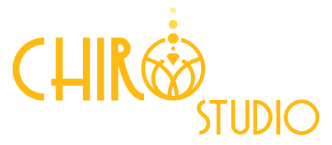Sciatica can be a debilitating condition, causing intense pain that radiates from the lower back down to the legs, often affecting every aspect of daily life. As sufferers seek relief, they are frequently presented with a choice between two distinct paths: chiropractic care and surgery. Each offers a different approach to treatment, with varying methodologies, recovery times, and outcomes. This blog post aims to explore and compare these two popular treatment options, providing insights into how each works, their effectiveness, and the potential risks involved.
Choosing the right treatment for sciatica relief is not a decision to be taken lightly. Chiropractic care offers a non-invasive alternative, focusing on manual spinal adjustments to alleviate nerve pressure and pain. Surgery, on the other hand, provides a more direct solution by correcting the anatomical issues causing sciatic nerve compression through invasive procedures.
Understanding Sciatica
Sciatica is typically caused by issues such as a herniated disk, bone spur on the spine, or narrowing of the spine (spinal stenosis) that compresses part of the nerve. This compression causes inflammation, pain, and often some numbness in the affected leg. Although the pain associated with sciatica can be severe, most cases can be resolved with non-operative treatments, such as chiropractic care and physical therapy.
Chiropractic Care for Sciatica in Cocoa
Chiropractic care is a form of alternative treatment that involves non-surgical techniques to address disorders of the musculoskeletal and nervous systems. The primary focus of chiropractic treatment for sciatica is to help alleviate pain, improve spinal movement, and promote natural healing. The techniques include but are not limited to spinal adjustments, manual manipulation, and various forms of physical therapy.
- Spinal Adjustments: Chiropractors perform spinal adjustments using their hands or a small instrument to apply a controlled, sudden force to a spinal joint. The goal is to improve spinal motion and improve the body’s physical function. This can help relieve pressure on the sciatic nerve caused by misalignment or subluxation.
- Manual Manipulation: This technique involves moving and jolting joints, massage, exercise, and physical therapy, all aimed at relieving pressure on nerves, improving nerve function, and enhancing blood flow, which can help reduce sciatica symptoms.
- Therapeutic Exercises: Chiropractors may also prescribe specific stretching and strengthening exercises that can help to stabilize the spine, reduce pain, and prevent further injuries.
Chiropractic care at Chiro Studio in Cocoa is generally considered safe when performed by a licensed and trained professional. It can be particularly effective for those who wish to avoid more invasive treatments. However, the effectiveness can vary depending on the specific circumstances of the patient’s sciatica.
Benefits of Chiropractic Care
- Non-Invasive: Chiropractic care provides a non-surgical solution to pain relief.
- Avoids Medication: This treatment reduces the need for pain medication and its potential side effects.
- Improves Mobility: Can enhance joint mobility and improve the function of the spine and pelvis.
- Cost-Effective: Generally, less expensive than surgery and associated with fewer hidden costs like post-surgical rehabilitation.
Risks and Considerations
While chiropractic care is generally safe when performed by a trained and licensed practitioner, it’s not without risks. Complications could include discomfort in parts of the body treated, fatigue, and headache.

Surgical Treatment for Sciatica
Surgery might be considered when conservative treatments have failed to relieve symptoms, or when the patient experiences significant disability or worsening neurological symptoms. The most common types of surgery for sciatica due to a herniated disc are microdiscectomy and lumbar laminectomy.
- Microdiscectomy: This is a minimally invasive procedure designed to remove the portion of the intervertebral disc that is putting pressure on the sciatic nerve. The procedure generally involves a small incision and minimal tissue damage, and most patients are discharged the same day.
- Lumbar Laminectomy: In cases where spinal stenosis causes the sciatica, a lumbar laminectomy might be performed. This procedure involves removing a portion of the vertebra (lamina) to increase the size of the spinal canal and reduce pressure on the sciatic nerve.
Surgical options for sciatica are usually safe and effective, and they have high rates of success in terms of relieving pain. However, as with any surgery, there are risks involved, including infection, nerve damage, and the possibility of not achieving the expected improvement in pain.
Benefits of Surgery
- Directly Addresses the Issue: Surgery can directly remove the physical causes of sciatica, such as a herniated disc or bone spur.
- Rapid Relief: Many patients experience rapid relief from symptoms following surgery.
- Long-term Solution: Surgical intervention can provide a long-term solution where other treatments might fail.
Making the Choice: Chiropractic Care or Surgery?
Choosing between chiropractic care and surgery for sciatica relief depends on several factors including the severity of the symptoms, the underlying cause of the sciatica, patient’s health status, and personal preferences.
1. Severity and Duration of Symptoms: For mild to moderate sciatica, chiropractic care might be sufficient. However, for severe or persistent symptoms, surgery might be necessary.
2. Patient Health and History: Patients with certain health conditions or a history of poor surgical outcomes might opt for chiropractic care.
3. Personal Preference: Some individuals prefer to avoid surgery at all costs and choose chiropractic methods as a first-line treatment.
Shockwave Therapy & Spinal Decompression for Sciatica Relief
Sciatica, a debilitating condition caused by compression or irritation of the sciatic nerve, affects millions worldwide. Characterized by radiating pain from the lower back through the hips and down each leg, sciatica often limits mobility and diminishes quality of life. Traditional treatments like pain medications, physical therapy, and surgery offer relief to some, but emerging therapies like shockwave therapy and spinal decompression are revolutionizing how we manage and treat sciatica.
Understanding Sciatica
Sciatica occurs when the sciatic nerve, which extends from the lower back through the hips and buttocks and down each leg, becomes compressed or irritated. This compression can result from various factors, including herniated discs, bone spurs, or narrowing of the spine (spinal stenosis). The hallmark symptom of sciatica is radiating pain that can be sharp, burning, or tingling, often exacerbated by sitting or standing for prolonged periods.
The Limitations of Traditional Treatments
Traditional treatments for sciatica typically focus on managing symptoms rather than addressing the underlying causes. Pain medications, such as nonsteroidal anti-inflammatory drugs (NSAIDs) or muscle relaxants, offer temporary relief but do not target the root issue. Physical therapy aims to strengthen muscles and improve flexibility, while epidural steroid injections provide short-term pain relief by reducing inflammation around the affected nerve. In severe cases, surgery may be recommended to alleviate pressure on the sciatic nerve.
Emerging Therapies: Shockwave Therapy and Spinal Decompression
Shockwave Therapy: Shockwave therapy, also known as extracorporeal shockwave therapy (ESWT), has gained popularity as a non-invasive treatment option for various musculoskeletal conditions, including sciatica. This therapy involves delivering acoustic waves to the affected area, stimulating healing processes and reducing pain. By promoting tissue regeneration and increasing blood flow, shockwave therapy helps alleviate sciatic pain and improve mobility without the need for surgery or medication.
Spinal Decompression: Spinal decompression therapy focuses on relieving pressure on the spinal discs and nerves, a common cause of sciatica. This non-surgical technique gently stretches the spine, creating negative pressure within the discs (intervertebral discs). This negative pressure can retract herniated or bulging discs, reducing compression on the sciatic nerve and alleviating associated pain. Spinal decompression therapy is often combined with other modalities like heat therapy or ultrasound to enhance its effectiveness.
Benefits of Shockwave Therapy and Spinal Decompression
- Non-Invasive: Both shockwave therapy and spinal decompression are non-invasive treatments, minimizing risks associated with surgery or medication.
- Effective Pain Relief: These therapies target the underlying causes of sciatica, providing long-lasting pain relief and improving overall mobility.
- Minimal Downtime: Patients undergoing shockwave therapy or spinal decompression typically experience minimal downtime compared to surgical interventions, allowing them to resume daily activities sooner.
- Customizable Treatment Plans: Healthcare providers can tailor shockwave therapy and spinal decompression treatments to meet individual patient needs, ensuring optimal outcomes.
The Future of Sciatica Treatment
As research and technology continue to advance, the landscape of sciatica treatment is evolving. Shockwave therapy and spinal decompression represent promising alternatives to traditional methods, offering effective pain relief and improved quality of life for those suffering from sciatica. By addressing the root causes of sciatic nerve compression without invasive procedures, these therapies pave the way for a more patient-centered approach to managing chronic pain conditions.
Chiropractic Care vs. Surgery for Sciatica Relief
In the journey to find relief from sciatica, both chiropractic care and surgery present viable options, each with its distinct advantages and considerations. If you are grappling with this condition and unsure about the best course of action, it is crucial to consult with healthcare professionals who can provide personalized advice based on your specific health needs and the severity of your condition. At Chiro Studio, located in Cocoa, we are dedicated to helping you understand your options so that you can make an informed decision that aligns with your health goals and lifestyle. Don’t let sciatica control your life—reach out to us today at (321) 431-7470 to discuss how we can support you on your path to recovery.
Choosing the right treatment for sciatica pain means considering a variety of factors, including the potential risks, benefits, and your personal health circumstances. Whether it’s pursuing non-invasive methods through chiropractic care or opting for surgical intervention, the goal is to find relief and improve your quality of life. Schedule a consultation and explore the treatments that best suit your needs.




